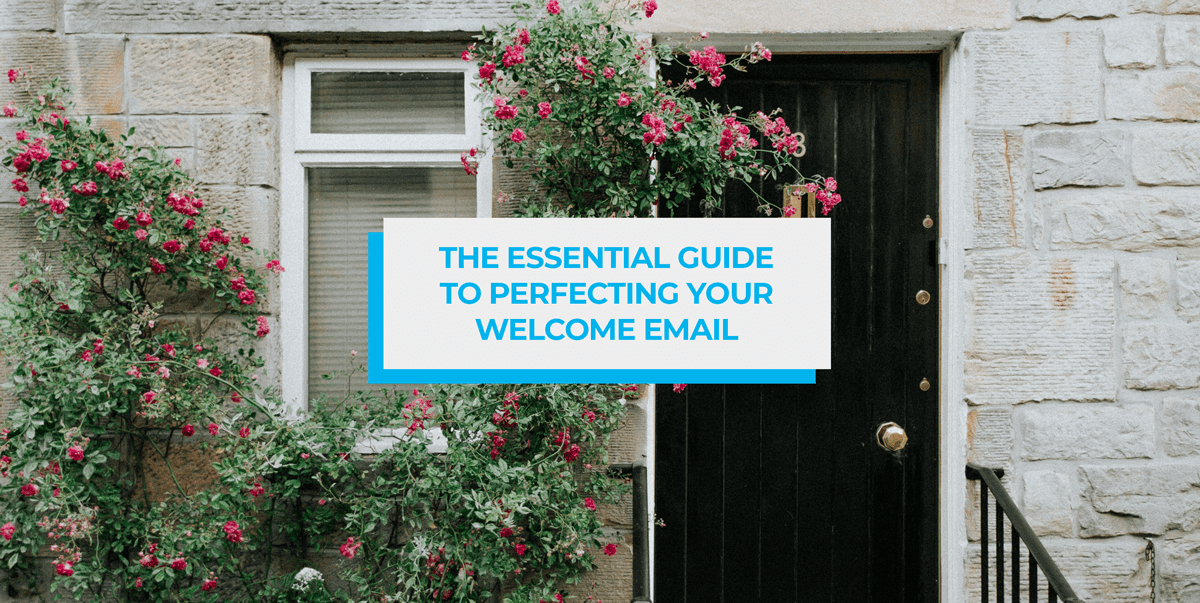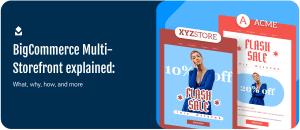You only get one chance to make a good first impression, and this is just as true with email as it is in real life. Your welcome email will shape the relationship between all your future emails and your subscriber. It can also make the difference between a person opening your future emails or not.
Despite this, many small businesses underestimate the effect their welcome email has on the recipient’s perception of their brand. This results in countless lost sales and opportunities. The real tragedy here is just how easy it is to compose a stellar welcome email that’ll deliver a great first impression and generate additional sales.
So in an effort to rid inboxes of lacklustre welcome emails, here’s our guide to crafting the perfect one.
1) A Great Greeting & Thank You
The first element to any welcome email should always be a greeting welcoming the recipient to your email list. While the exact nature of your greeting will depend on your brand, in most cases it should be warm and friendly.
Don’t be afraid to be a bit creative here. As long as the greeting comes across as sincere and fits your overall branding, feel free to be as fun as you want.
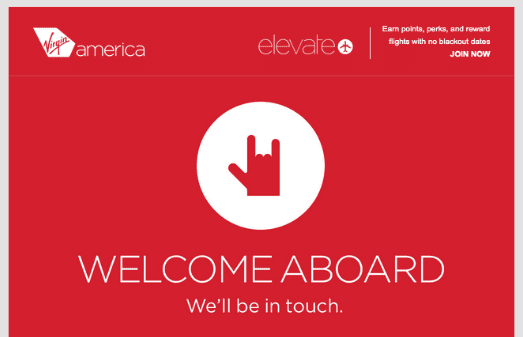
As you can see, Virgin America’s welcome email is more fun and engaging than your typical ‘welcome to our mailing list’ greeting. This greeting definitely aligns with the Virgin brand. This also helps to reinforce their brand message and overall marketing strategy.
Additionally, you should also consider thanking your subscriber for signing up to your email list. In a world where email marketing is all-too-often abused by email marketers, showing that you appreciate and value their attention can go a long way.
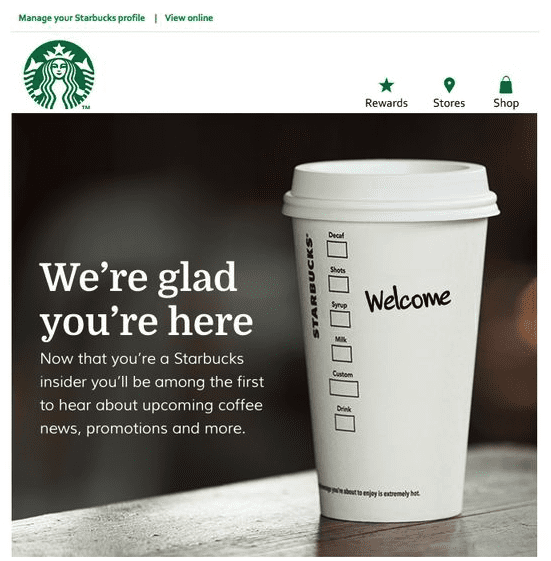
While Starbucks’ welcome email does a great job at showing appreciation for the recipient signing up, don’t be intimidated by their creativity. As long as you show sincerity in your thank you message, your subscriber will be grateful for the sign of appreciation.
(Check out our list of thank you email examples for more inspiration.)
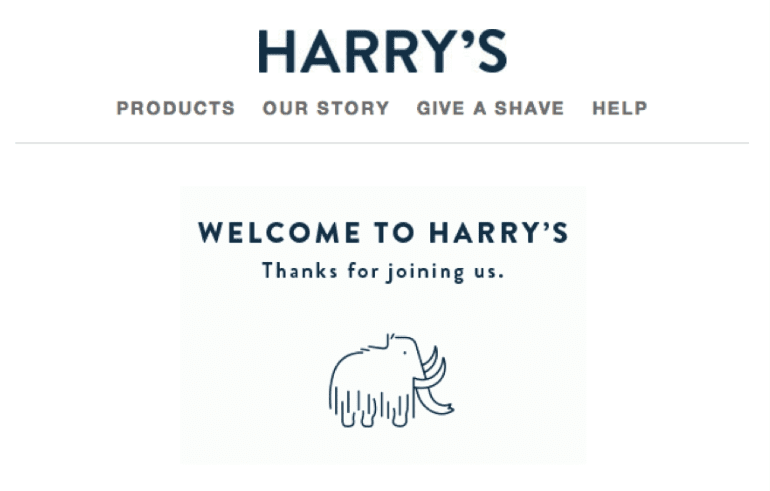
2) Deliver the Goods
If you promised something in exchange for signing up to your email list, such as a free ebook, then it is absolutely essential that you include it in your welcome email. Failing to do this will immediately put your relationship on the back foot and have already broken the trust your subscriber placed in you.
Even if you eventually deliver what you promised in a second email a short while later, there’s a good chance this email will be ignored. The importance of this cannot be understated.
You’ll also want to make sure that the link to download what was promised is in a prominent position towards the top of the email. Otherwise you risk the recipient not finding the link altogether and feeling disenfranchised as a result.
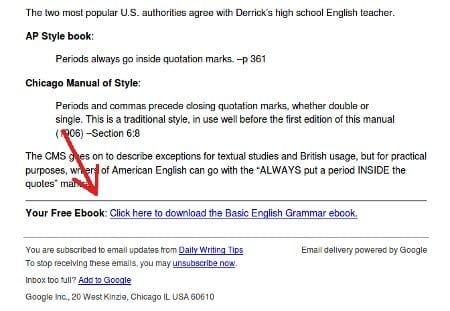
The link to download the free ebook in the email above is too small and too far down the email that it could easily be missed. Make sure you avoid the same mistake by locating your opt-in offer in a clearly visible position towards the top of your welcome email.
Remember that nobody signs up to an email list for nothing, there is always a reason behind the signup. Even if the incentive isn’t as obvious as a discount code or free ebook, people likely signed up to remain informed about new products or simply to get your monthly newsletter. As each business has a different value proposition, the exact reason people are signing up to your list will be unique to your business.
So even if there are no ‘goods’ as such to deliver, your welcome email is the perfect opportunity to restate your value proposition. Doing so reassures the subscriber that signing up wasn’t a mistake and reaffirms that they made the right decision.
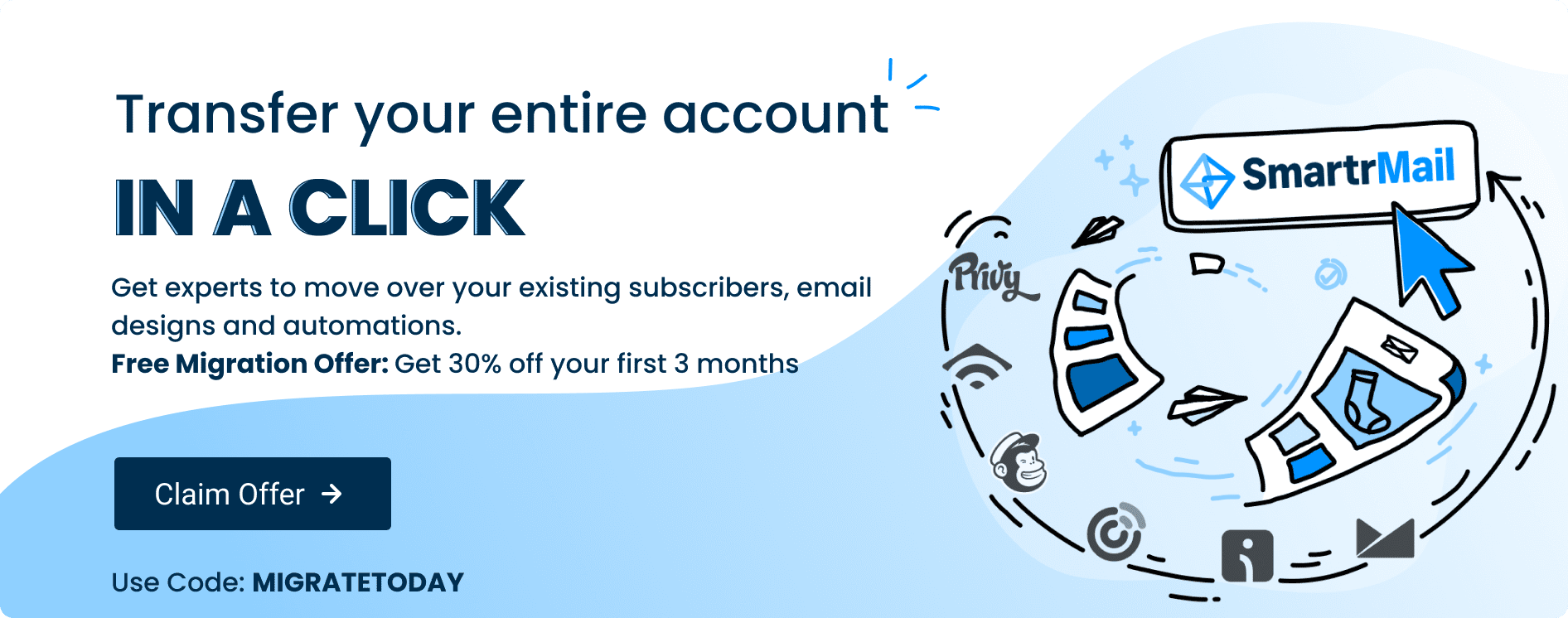
3) Let Them Know What to Expect
You should always ensure people know what signing up to your mailing list entails before they sign up. That said, your welcome email is the perfect opportunity to restate what your new-found subscriber should expect.
By reminding people of how often they will receive new emails, and what these emails will be about, you can reduce the ‘I didn’t opt in for this’ feeling among subscribers later on. This can help prevent complaints and people marking your emails as spam, which can kill your deliverability.
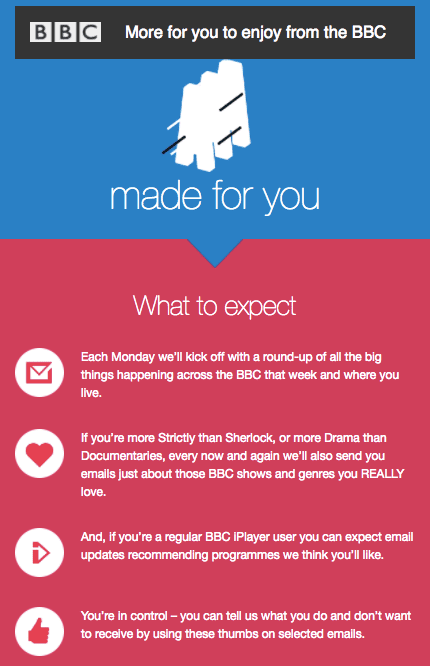
The BBC’s welcome email is a great example of outlining exactly what the recipient should expect. After reading it, one knows exactly what emails they’ll be receiving in the future, what these will contain, and why they’ll be receiving them. Being so upfront also helps to once again reassure the recipient that their attention is valued and not taken for granted.
Don’t feel that you have to go into as much detail as the BBC did here. This example is rather long and if it were any longer, then it would just be overloading the subscriber with information. Just a few lines on content and frequency of future emails should be enough for most welcome emails.
4) Remind People of Who You Are
Re-introducing yourself might seem like a strange thing to do here. After all, someone who signed up only moments ago is going to know who you are. But by including just a few lines about what your business does and what your mission is, you help to cement the relationship with your subscriber.
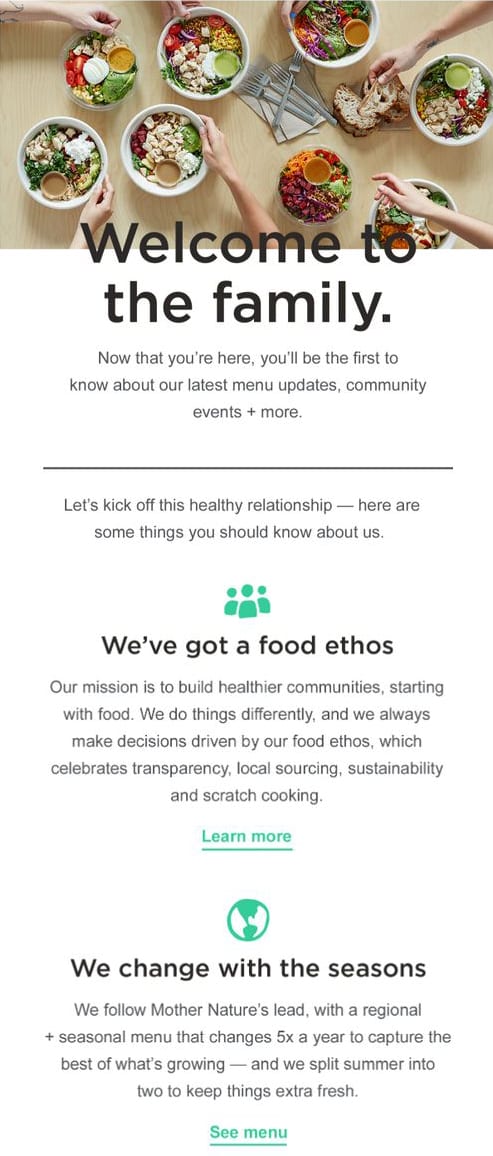
The email above does a good job at this. Reading through their mission statements, one is filled with a good feeling about the company and is likely to be reassured of their decision of signing up to their emails.
The about us section in this email is fairly long for a welcome email. That’s because this particular business leans itself well to discussing the ethos of the brand. You likely don’t want this section to be as long in your email, otherwise you risk boring your recipient. Like many aspects of email, less is definitely more here.
5) Provide a Clear Call-To-Action
Call-to-actions (CTAs) are a quintessential part of email marketing, and welcome emails are no exemption to this. Considering those emails have some of the highest open rates of any type of email, you want to take advantage of all the attention they receive.
The number of CTAs you include is also important. While most emails contain more than one CTA, the most successful only have one clear CTA. To highlight this point, consider the multiple links in the email below.
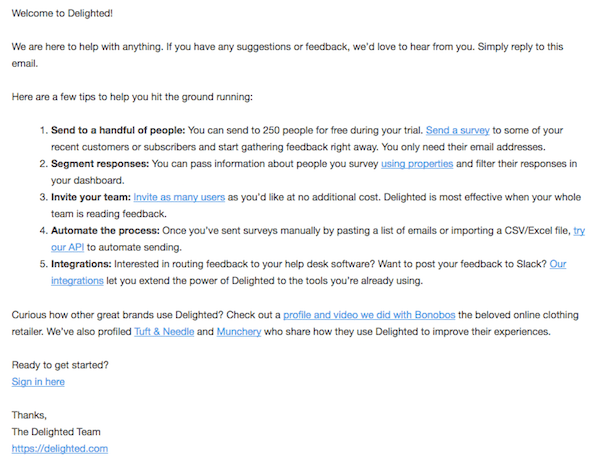
Having ten different links means none of them draws your attention to it. And while you may think that having ten CTAs means there is ten times the likelihood that someone will click on one, this simply isn’t the case. Instead without a clear next step for people to take, they end up ignoring all the links and disregard your email.
Contrast this with the email below. This email create a clear path for the customer to continue along with the next step being clear: download the app.
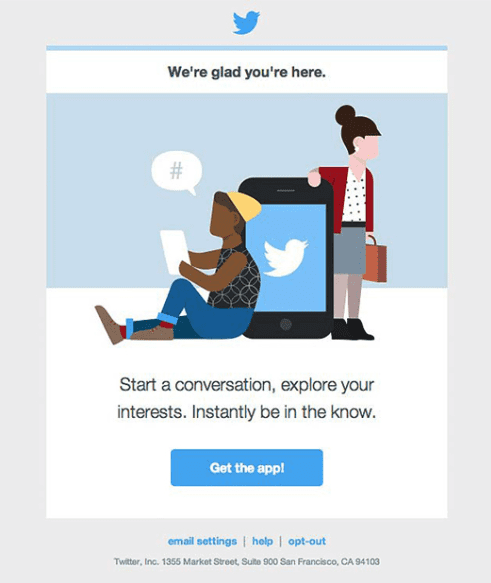
6) Provide Contact Information
Finally, the last component to include in your welcome email is a way for people to get in touch with your business. While putting your physical address in your email footer is required by CAN-SPAM laws, you’ll want to consider adding more way to reach out.
Being approachable will not only be appreciated by your customers if they can’t find the answer to a question they have, but will also lay a foundation of trust. Adding links to social media accounts can help further cement this by making your business appear more established.
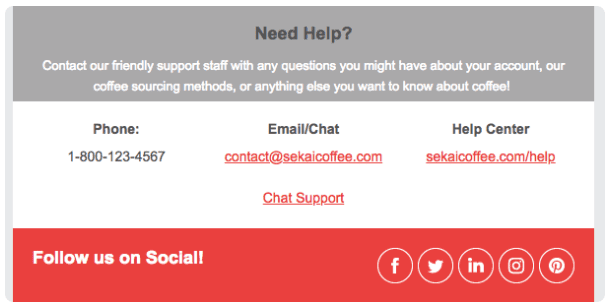
In the example above, the contact information is located in the footer, the best place for it. This is the part of the email most people will search for ways to contact you seeing as it’s the conventional place for contact details.
Also, by including this last, you aren’t detracting from the CTA in the body of your email. You don’t want people to ignore your CTA because of this section.
For this reason you might want to send a follow up welcome email a day later with links through to your social media profiles. This effectively eliminates the chances people will click through to your Facebook page instead of on your CTA button.
7) Don’t Stop At Just One Email
You’re not limited to just one welcome email. In fact it’s often recommended to send a series of welcome emails to ensure that your subscribers remain engaged.
As per the last point, you might want to dedicate an additional email to getting people to connect with you on social media. Other emails you can include as apart of your welcome series include surveys to gather customer feedback and emails asking for customers to give a review.
To learn more about crafting your welcome series, check out our post on the 3 Emails Every Ecommerce Stores Needs in their Welcome Series.
8) Optional Extras
There are a few other things commonly added to welcome emails that you might want to consider as well.
Asking to be whitelisted
Whitelisting is the process of manually adding a particular email address to one’s list of contacts they want to receive emails from. Doing so ensures that inbox services providers such as Gmail and Yahoo do not mark emails they send as spam.
If it’s essential that all your subscribers receive every email you send, then you can add instructions on how people can whitelist your email address. Below is an example of this.

Offering an incentive
If a person has just signed up to your emails, then they’ve either also just converted or are on the precipice of converting. For the latter, an offer could give them the push they need. Seeing as there’s also a chance they might become less and less inclined by the time they receive your next email, which they might not even open, it’s can be beneficial to strike early.
The offer can be as simple as a small discount or free shipping if you have an ecommerce store. If you decide to include such an offer, make sure you the message in the welcome is clear and towards the top so people see it.

Next Steps
Now that you know all of the essential parts that make up a great welcome email, it’s time to start creating your own! If you’re looking at an easy way to compose emails and send them automatically when someone signs up to your list, then take advantage of SmartrMail’s 15-day free trial. We’re an easy to use email marketing app for ecommerce stores. Click here to learn more.

